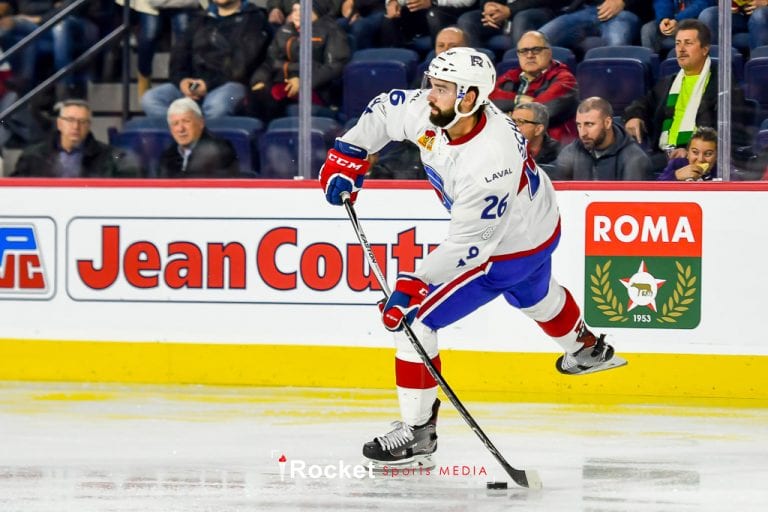

by Blain Potvin, Staff Writer, All Habs Hockey Magazine
The mainstream media has poured ink-like rivers writing at length about Marc Bergevin’s declaration at the Canadiens Charity Golf Tournament this September that the current defence is much improved from last season.
The results on the ice stand in stark contrast to that assessment. Personally, I don’t believe that the Canadiens defence is as poor as we witnessed in the first 10 games of the season. Montreal went 2-7-1 allowing an average of 3.8 goals against per game in that stretch. That said, this year’s edition certainly isn’t up to the standards of last season’s fourth best defence.
Through games 11-20, we saw an improvement, with a record of 6-3-1 and paired with a 3.0 goals against average. So what happened? Was it just a poor start to the season or an adjustment to a defensive system?
**The defence as currently constituted relies heavily on Shea Weber to take on all tough assignments and play heavy minutes in all situations.**
Would an upgrade on defence with an additional puck moving defenceman help the offence? I would argue no, not directly.
Offensively, the Canadiens are third in the NHL in shots at 35.3 per game. A puck-mover could help add additional shots on goal but that is not really what’s needed.
Instead, Montreal forwards need to be better at creating high quality scoring chances, by going to the tough areas of the ice, something they have been woefully inconsistent at doing. The Habs are next to last in goals per game at just 2.36.
Defensively, the addition of a mobile skater on the blueline should help immensely. The Canadiens sit 13th in the NHL in shots against at 31.4 per game. An additional top-four, mobile defenseman capable of logging heavy minutes would greatly help in zone exits and especially in the transition game. This would force opposition offences to be more cautious allowing Montreal forwards to build speed into the neutral zone.
So who could help the Canadiens on the blueline for the long-term?
The first name is Jakub Jerabek. The 26-year-old has played three games for Montreal after his recall from Laval. Jerabek has played an average of over 16 minutes per game and, apart from a few missteps, has not looked out of place. At plus-3, he is the only Canadiens defenseman not on the negative side of the ledger.
In 17 games with the Rocket, Jerabek recorded one goal, ten assists for 11 points and has a plus-10 ranking. He sits second in the AHL with a defensive zone exit success rate of 70.1 per cent and is third in entry prevention with a 31.2 per cent success rate.
Statistics alone are not a reliable predictor of success. So I asked for the respected opinion of my colleague Amy Johnson, Lead Reporter with AHL Report on Jerabek’s progression.
“He did well defensively, and his transition to the smaller ice is coming along but his positioning still needs some work.” — Amy Johnson
Amy Johnson asked Jerabek to describe his progression in Laval. You can see how he responded below.
David Schlemko has not played a single minute in a Habs uniform, having missed all of training camp with a hand injury. But he is poised to make his debut possibly as early as Wednesday against the Senators. Schlemko played two games in Laval on the weekend as a conditioning stint.
On paper, Schlemko could be an upgrade on the left side. He has average size and puck-moving skills. He is capable of playing a solid positional game and is a mobile skater.
Schlemko played on the second-pairing for the Sharks in last year’s playoffs as well, so he is capable of logging quality minutes. Yet he is not reliable enough to consistently log top minutes.
Neither Jerabek or Schlemko is an ideal choice as a top-pairing defenseman. Adding one or both could help spread the workload, but these defenseman cannot fill a regular role as a partner for Shea Weber.
A trade may be the best option to fill the role of a puck-moving defenseman. One name that may become available is Oliver Ekman-Larsson. The 26-year-old has toiled away for the better part of eight seasons with the Arizona Coyotes, a team that is on pace to produce one of the worst post-1967 expansion records. The Coyotes may be inclined to move their prized blueliner with eye on this year’s top prospect, Rasmus Dahlin.
Ekman-Larsson is a smooth skater, capable of handling forwards using his larger frame. He is defensively responsible making few mistakes with the puck. He could play the body more often but his strength is his offensive game.
All that being said, it is clear that the current Canadiens roster requires an upgrade to become relevant in the Eastern Conference discussion. Bergevin has shown he is capable of making bold moves in the past.
For the franchise to make the leap into contender status, he’ll need to find a way to turn almost $9 million in unused cap space into players who can fill rather large holes in the lineup especially on the backend. If he cannot, the Canadiens may very well slide back into also-ran status and out of the playoff picture.
Schlemko has played with 6 teams in the last 3 years..never played more then 1 year with a team…so he is not the saviour Montreal needs and probably won’t even help at all…why are they placing everything on him when they have Azner in the 1 hole..and he is the worse Dman on the team and bench Mete for what..send him back 2 juniors b4 MB and CJ ruin him
I love your bubbly personality and obvious hockey knowledge.
the fact that Schlemko was on 6 teams in 3 years and never on a team for over a year is not knowledge but fact
Comments are closed.